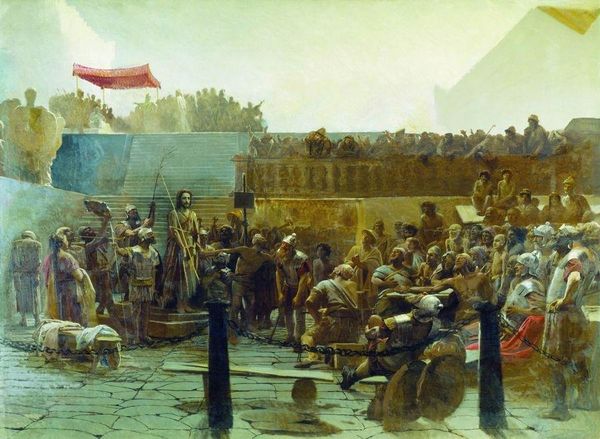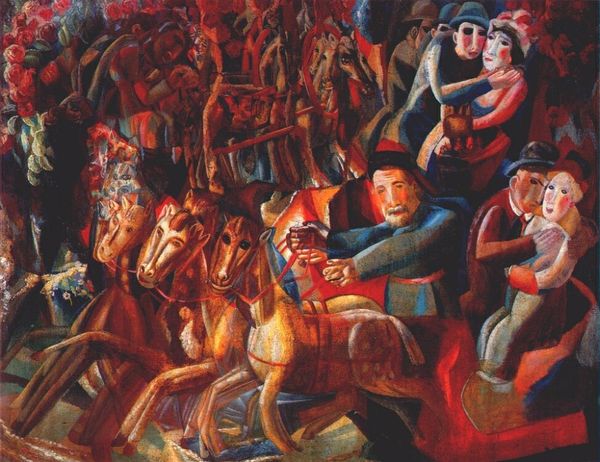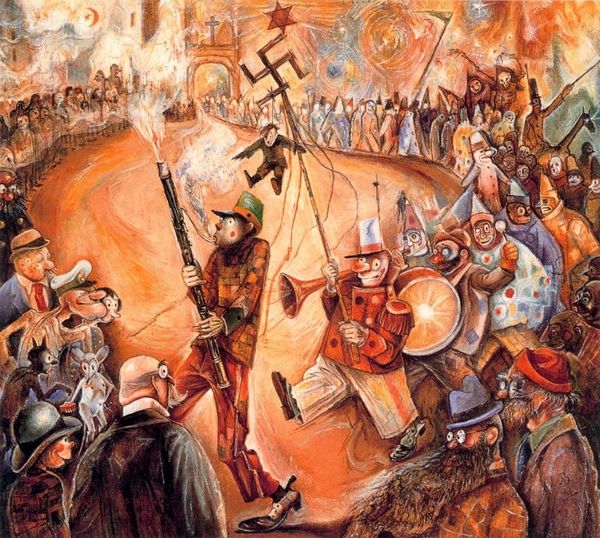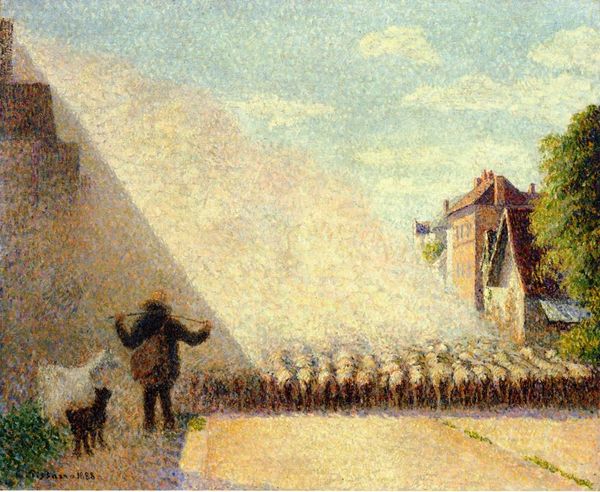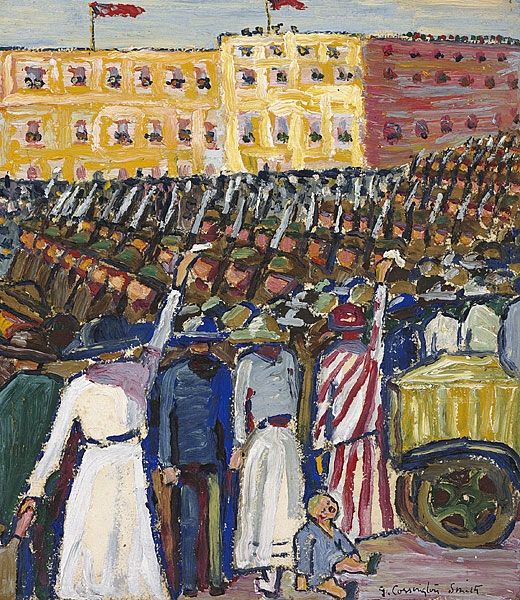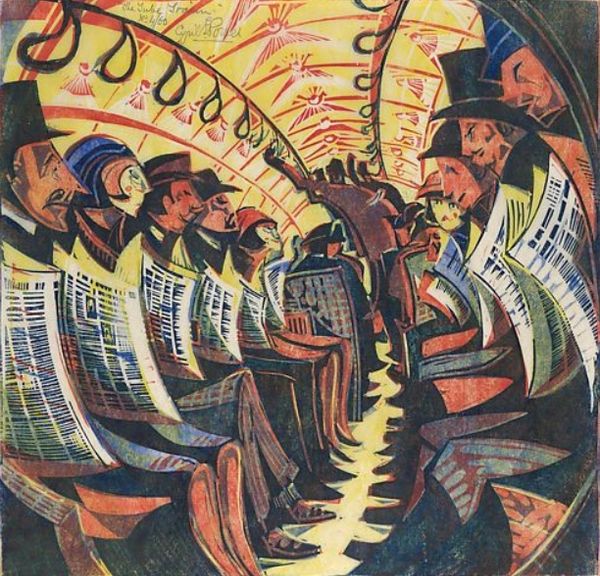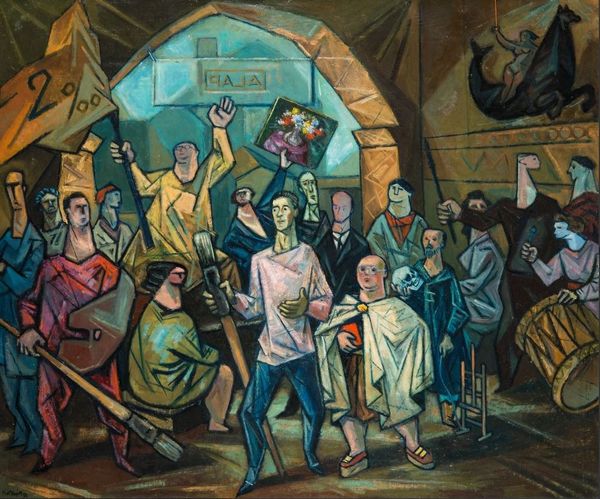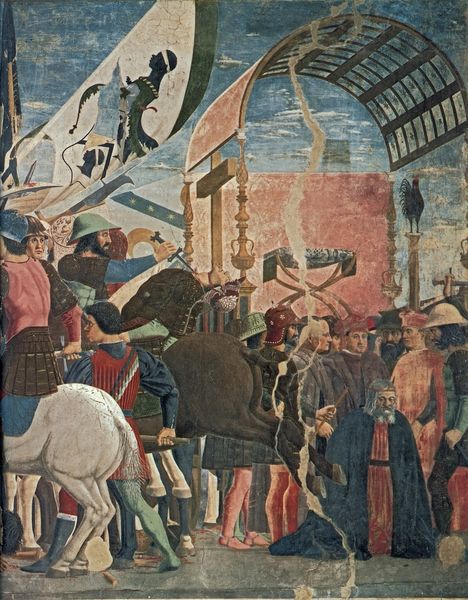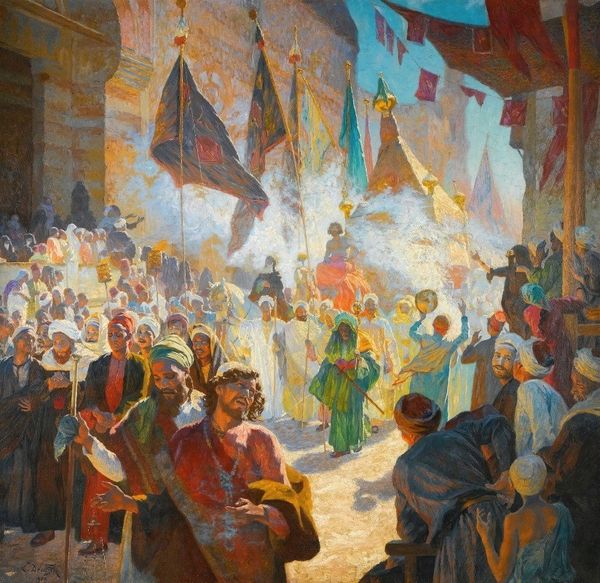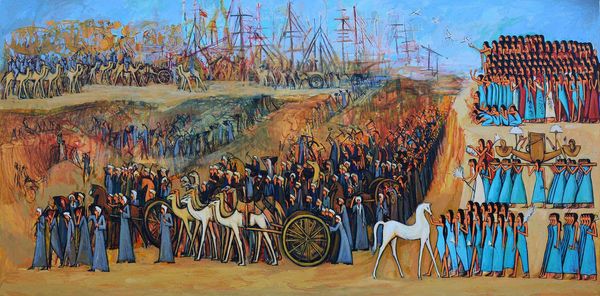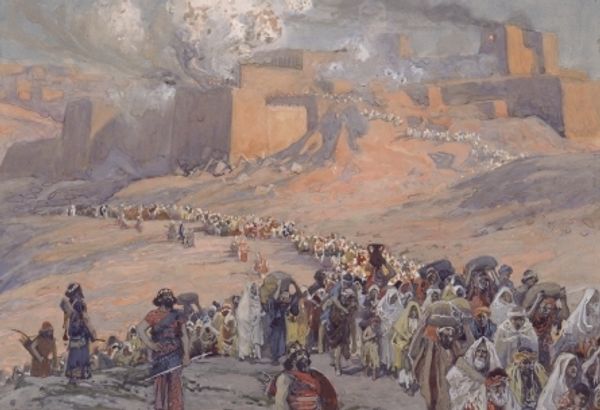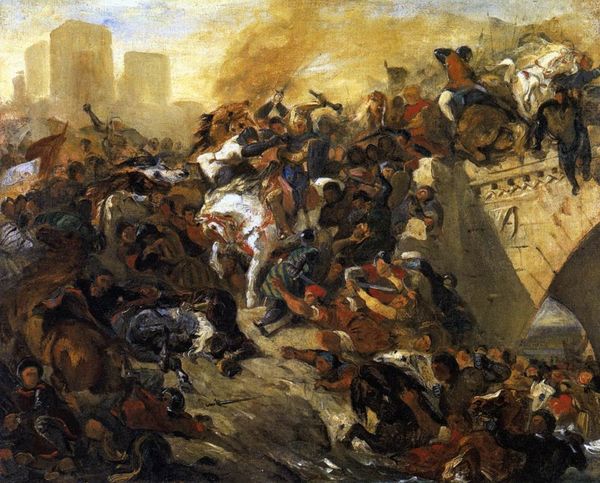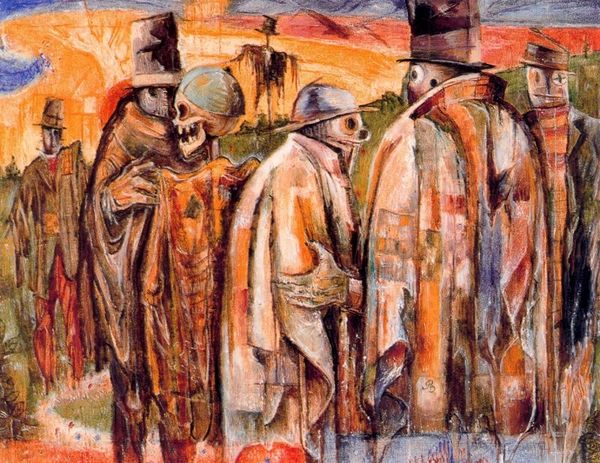
Copyright: Martiros Sarian,Fair Use
Curator: Here we have Martiros Sarian's 1933 oil painting, "Mountainous March of Armenian Units." It's quite a powerful piece of Soviet-era art. Editor: Powerful indeed. My immediate impression is one of relentless movement. A wave of soldiers ascending into some kind of... incandescent landscape? It feels both energetic and unsettling. Curator: Yes, that blend is key. Sarian was a master of color, and here he uses those vibrant oranges and yellows not just to depict the landscape but to evoke a sense of revolutionary fervor. The mountains are not just geographical features; they are symbols of the challenges faced by the units, a hurdle of progression. Editor: The figures, while numerous, are almost standardized, aren't they? Yet, their expressions, or lack thereof, contribute to a feeling of unwavering resolve. The red stars are practically shouting their ideology to anyone viewing. Curator: Precisely. Sarian’s focus on collective imagery serves the Socialist Realist agenda prevalent at the time, idealizing a unified force marching toward progress. However, the use of such an expressive style lends itself to be classified as Soviet Non-conformist art. Editor: And look at how the column of soldiers appears to morph almost organically out of the mountain. The mountain range in Armenian culture also symbolize hope, eternity, strength, which are some images Sarian is trying to show to the population with this painting. It feels as if they’re inseparable. But that color palette feels a little unreal, somehow... more symbolic than literal. Curator: Sarian often used color symbolically, drawing from traditional Armenian art and his deep connection to the land. The colors can speak to a vision of a new, almost utopian future. While commissioned during Soviet rule, it holds universal appeals to the symbol of a rising population through symbolism that’s been apparent since Armenia's rich ancient past. Editor: Interesting how even in its portrayal of collective strength and its revolutionary themes, one can still trace older symbols about persistence. Thank you, this was especially enlightening to view with context in mind. Curator: My pleasure! Seeing artwork like this helps illuminate that even during periods of strong socio-political shaping, there is so much you can derive by understanding history through the artist's individual visual language.
Comments
No comments
Be the first to comment and join the conversation on the ultimate creative platform.
